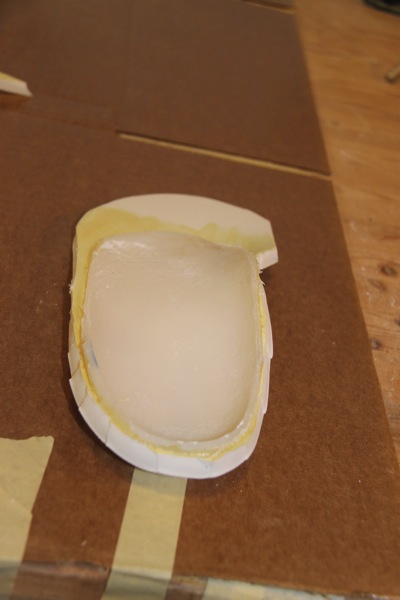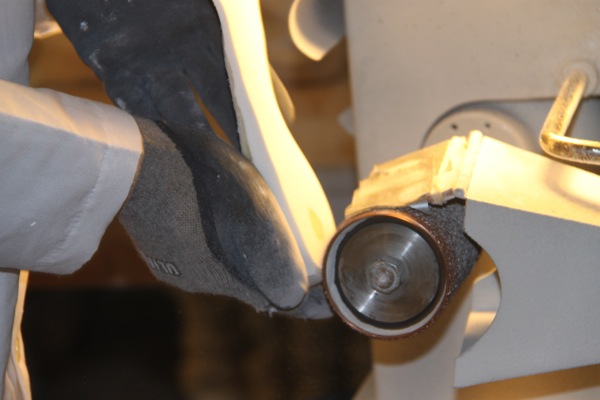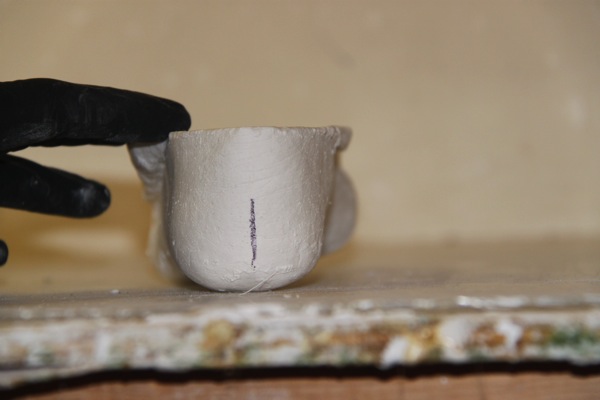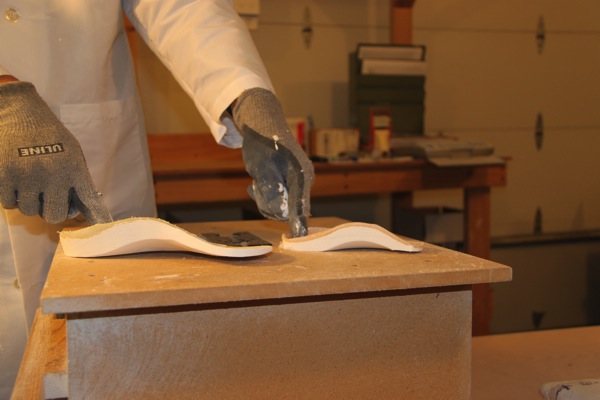26 Oct What You Want To Know About Rearfoot Posting

Hey everybody, I’d like to continue from the last post showing the video of the vacuum pressing procedure.
Now we have our plastic shell, molded onto the positive cast.
What next? This shell can be grinded to fit the foot and placed into the shoe and you will have an orthotic right? Maybe, maybe not!
Your expertise comes in here.
You have seen the patient and given them a thorough evaluation.
You have an idea of the effect you want to have on their life with this pair of orthotics.
“What?”, you say, “effect on their life?”. Yes, I meant that!
This is where we continue to design the orthotics that are tailored exactly to your patients needs. You will make choices that will help relieve pain, bring comfort and develop trust. What a great position to be in, right?
Ok, I know, I’m being a bit idealistic here, but just bear with me for a moment… Think back with me…. haven’t you had that patient who is so touched by your work that they are moved to tears? You know, that moment when they pause and you can see their face light up when they realize that they can walk without pain, finally?
Many of you have been faced with patients who have had foot orthotics before. They are not happy, the orthotics don’t work for them and they have given up hope. This is your chance to do what you live for… to change lives.
We want start by looking at extrinsic foot orthotic posting.

Posting is external material added to the orthotic. We will call this “extrinsic” posting. This is where it begins to get confusing because the nomenclature out there is not uniform and different orthotic makers use different language when it comes to this.
Now there is such a thing as “intrinsic” posting. This is posting that takes shape in the shell curvature by altering the casts. We will explore that at a later date.
For the purposes of this post, we will focus on extrinsic posting.
Picture a lamp post. A vertical pole anchored into the ground for what purpose? To support a lightbulb encased in a protective cover, which gives light to passersby when it’s dark out. Simple enough right?
A foot orthotic post can be thought of as the same thing, extrinsic material from the ground up to the foot to support that area of the foot. Now this is just what it is, but what it does is so much more. This description is a static one. But since the foot doesn’t sit in a static position like a lampost on a firm foundation, the extrinsic post becomes much more.
Let’s take a foot that has a rearfoot varus deformity for example. The post for this would be a called rf varus post. The extrinsic material on the bottom of the shell will have an angle to it where the medial side is higher than the lateral side. The idea is that with the rearfoot varus deformity, the calcaneous is in a “tilted” position with the medial condyle of the calcaneous lifted up off of the ground, the rf post would be angled upwards medially to meet it.

Statically, that sounds good right? But we all realize that we still want the calcaneous to go through its normal pronatory motion at heel strike to absorb the shock of the body weight hitting the ground. Also, we realize that the rearfoot may be going through compensatory motion to make up for the deformity. That is, the rearfoot has to pronate more than usual to bring the medial condyle of the calcaneous to the ground at the heel contact phase of gait. Generally, the goal would be to control the compensatory motion, while allowing motion that is normal for that particular patient.
To help with this, we choose compressible materials like crepe or eva to make the post. You can alter the density of these materials to allow as much motion as you need to.
We also choose the angle of the post to be at a degree that is adequate to control compenstation but also not so high that it limits normal motion. Often, posting enough to take the calcaneous out of its maximally pronated position is enough to give the patient some relief.
Also the flexibility of the core plastic shell contributes to the amount of motion that is allowed. The more flexible shell will allow more motion. Or an orthotic without the plastic shell, with a compressible eva as the core will allow for more shock absorption.
Furthermore, the width of the plantar surface of the rf post will add to the control of the post. The wider the plantar surface of the post, the more controlling the post will be. Shoe fit is a big consideration here. The shoes may require that the plantar surface of the rear foot post be narrower, thus decreasing the amount of control.
Lastly, the depth of the heel cup on the orthotic can contribute to the control of the rf post. The deeper heel cups will cup and hold the calcaneous more. The deeper heel cup will also compress the fat pad at the perimeter of the heel and displace it plantarly, which helps with shock absorption.
Working together, these features create a functional extrinsic rf post that does six things.
- Brings stability to the rearfoot.
- Brings the contact surface up to meet the deformity
- Contributes to the shock absorption at heel contact
- Decreases the amount of compensatory pronation
- Decelerates excessive pronation
- Allows normal pronation to occur.
So how do you order a rf post?
How is the lab going to understand exactly what you want? Each lab or Pedorthist should have an order form to give you options to select. You can even leave it blank and get help with it over the phone after your casts and order form arrive. It is a good idea to get to know a “go to” expert at the lab. This person will help you fill out the form. Get their name and be their friend! Send them some chocolate! As a former chocolate recipient…trust me, this works!
The manufacturing lab is full of people with varying degrees of knowledge and skill. You want the person that has the most experience. The person that understands what the orthotic components do to the foot and lower extremity. Also, someone who has made orthotics with their own hands.
Now when you order your rf post, first understand what is happening at the forefoot of your orthotic first.
Find out from your lab expert about what happens to your cast and orthotic as a lab standard. The lab standards will apply certain features to your orthotic that you may not know about. These standard features are applied without you requesting them. For example, most labs will lower the medial longitudinal arch on your cast as a standard. If you don’t want that, you have to ask them not to do it!
Now, back to your forefoot. Many labs have a standard that will add intrinsic correction to your forefoot automatically. This is done to fully correct the forefoot and bring the calcaneous to a rectus position. They won’t tell you that they do this! They aren’t trying to decieve you. In their minds, this is what happens to all foot orthotics…it’s what an orthotic is.

If the calcaneous is brought to a rectus position with forefoot intrinsic correction, your orthotic will have some rearfoot correction built into it before you have chosen your rf posting angle. The result would be that you may not need as much rearfoot posting as you originally thought because the calcaneous has been corrected somewhat by the lab’s standard treatment of the forefoot.
Confused yet? I know…just remember this: The degree of forefoot correction added will already be present in your rearfoot before you add your extrinsic rearfoot post correction.
For example, if you put four degrees of forefoot posting on the orthotic, it will tilt your rearfoot four degrees also. That means that there is four degrees of rearfoot control already built into the orthotic before you have added any rearfoot posting angles.
To illustrate, lets say that you needed six degrees of rf posting. The forefoot has been posted with four degrees, tilting your rearfoot four degrees as well. Without using any new math, we can see that we only need to add 2 degrees to the rearfoot to achieve a total of 6 degrees of change in the rearfoot.
The most common way to communicate your rf post amount is in terms of degrees.
You’ve assessed the total range of motion of your subtalor joint in terms of degrees. You’ve got a certain degree of rf varus deformity. Functionally, you’ve observed a certain degree of overpronation. You have a clear understanding of what has been done to your casts that could affect the rearfoot. And so, you would just write the amount of degrees of rf posting you want on the orthotic.
So then, how will you know what that will look like?
How do you know if the lab or craftsman gave you the correct degree of posting? The simplest way to think of it is to think of it it in terms of thickness. If a rf post is 2 degrees, it will be angled roughly about 2-3mm higher on the medial side. I would say 3mm or slightly less on average size feet.
When the orthotic comes back from the lab, you should be able to test it.
Here is how: Place the orthotic on the table. Place your thumb in the center of the heel cup and apply mild pressure, causing the heel to sit flat. Place your ring finger on the distal edge of the shell at the fifth met and apply mild pressure, causing the shell to contact the table. While holding your thumb and ring finger in place, you should be able to see the distal medial corner of the shell pop up at the first met. You will be able to see if it pops up about 1/8 inch off the table to assess your rf post amount. If it doesn’t pop up at all, then your rf post is too low. If it pops up more than 1/8 inch, then your rf post is too high.

What should you do when the post is not accurate? Well, you should have a warranty with the lab or craftsman that would allow them to fix it at no charge. If you do at least few pairs of orthotics per month, it is a good idea to have a bench grinder to make small adjustments. That will be the subject of another post.
So stay tuned and subscribe for free to continue building on the knowlege you have gained so far. As I always say, have fun! You are in a life changing business! And foot orthotics are a way to continue to have an impact on your patients even after they have left your office…
Question: What is your most rewarding experience with using foot orthotics for one your patients?

No Comments